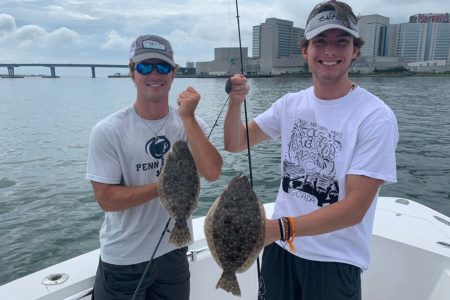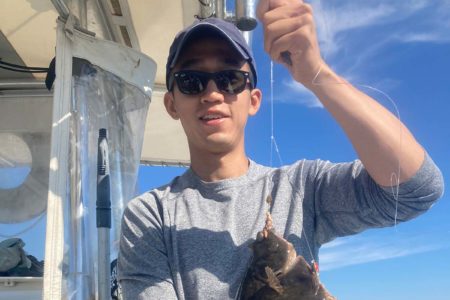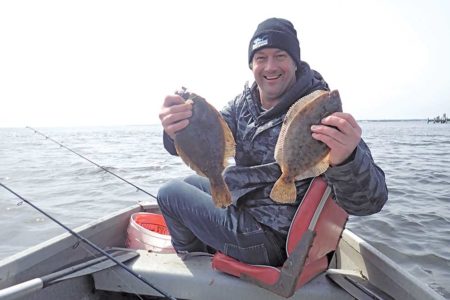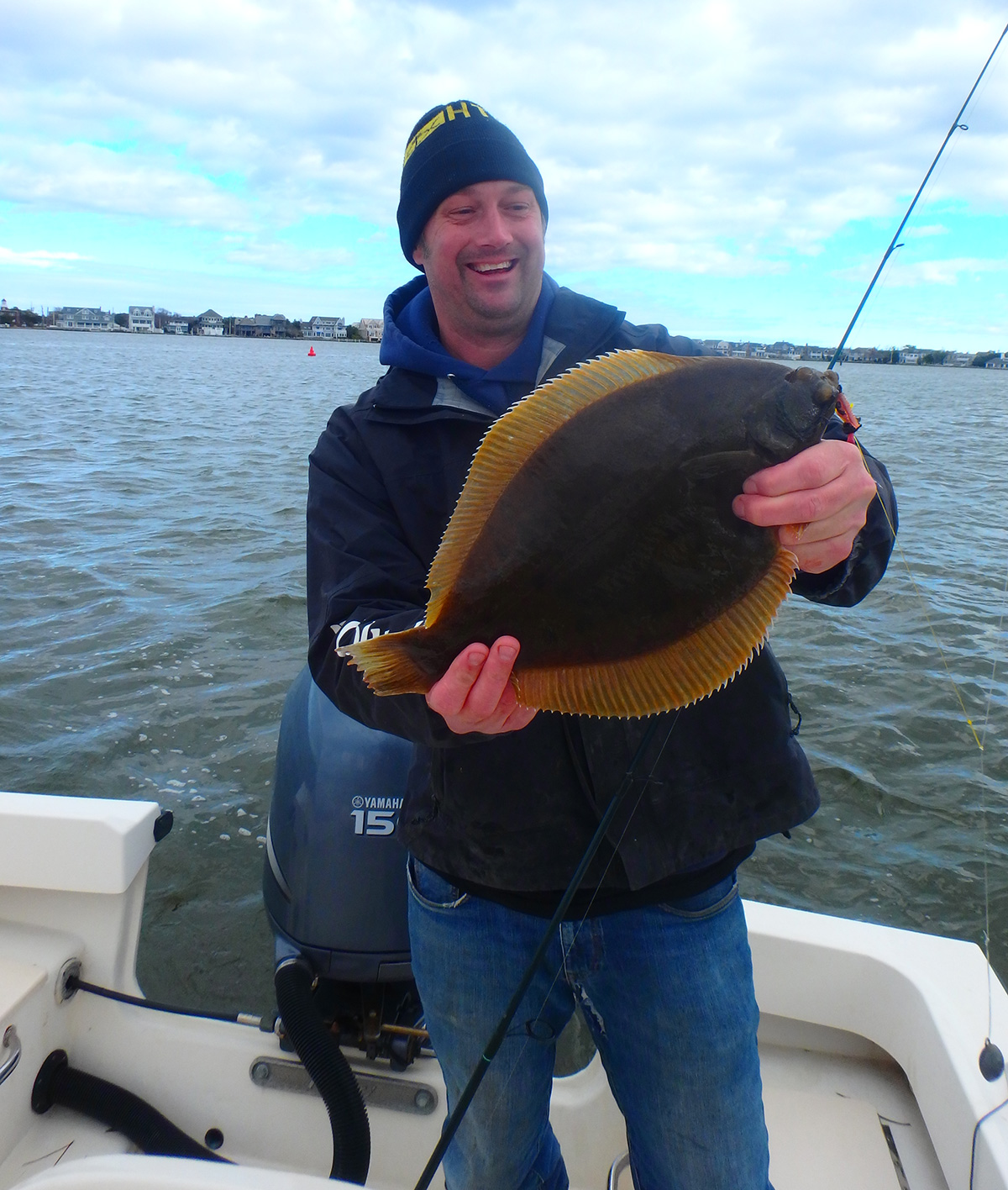
Before those left-leaning fluke come in, hit those right-eye winter flatties before they make their way out!
In April of 2017, I saw the light again. It had been nearly a decade since we had some respectable winter flounder fishing in the Garden State. Dropping down the frozen clam chum logs, BK and I set anchor on a spot inside Barnegat Bay to see if any winter flounder had come back into our waters.
I was suspect about the whole deal as flounder had been ghost for too long to us to be out there to feel positive about giving it a try. We set up in 7 feet of water on a dead slack tide, and the first bloodworm bait was dropped to the bottom. I was about to set the rod down to get the next rod deployed when I felt what seemed like a tap. Naw, couldn’t be, I thought, so I bent to lay the rod down when the tap came back again. I set the hook. There was weight!
After a quick fight, a chunky 16-inch blackback was flopping on deck. We proceeded to land a dozen flatfish of the same caliber for an hour until the tide started rushing out too fast for an effective presentation. It was proven – flounder were back in town.
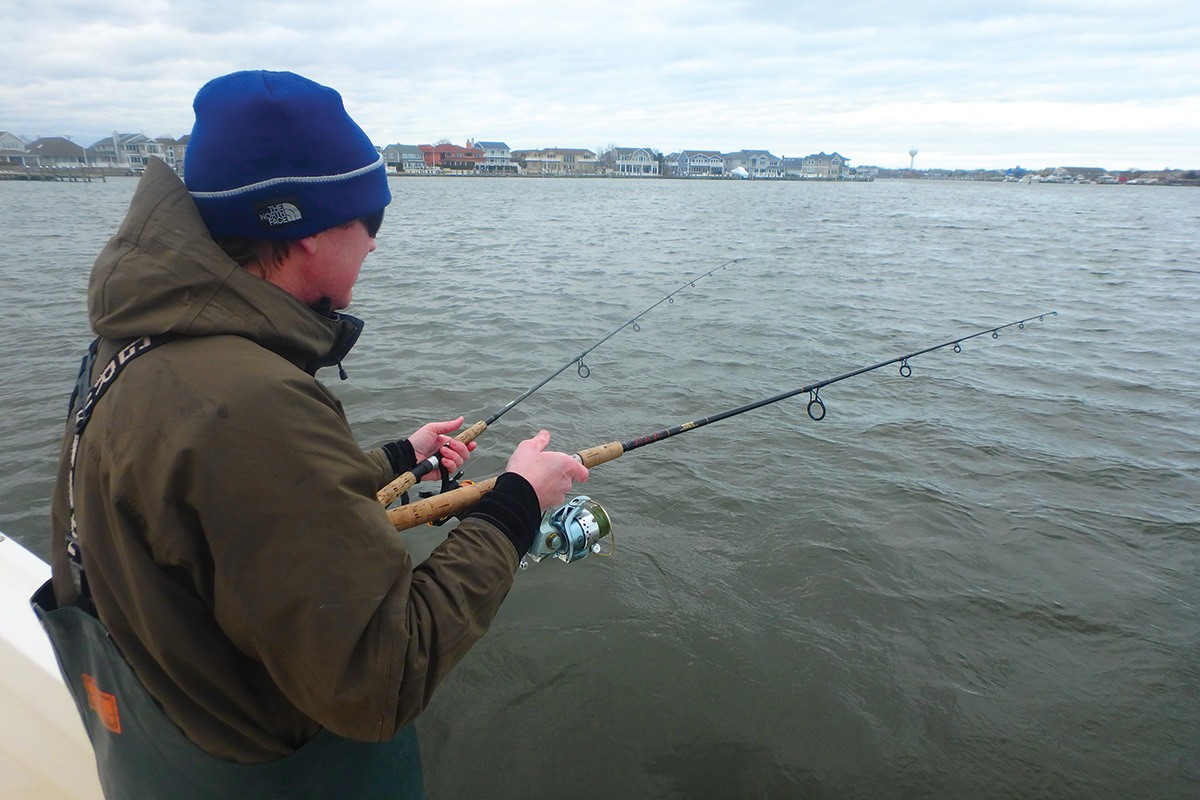
First Shot Spots
Anyone under 25 years old probably doesn’t realize that there was some serious flounda poundin’ to be had in central and northern Jersey waters back in the late ‘90s and early 2000s. Every spring, fall and winter it was a lock to load the coolers up with an unlimited bag back then on only a quick two- to three-hour trip—solid backwater action. Historical springtime spots are now coming back into play.
Try cracking the flounder code starting right on March 1, and the spring fishing should last well into the third week of May. The Shark River Inlet area was always flounda central and still holds the best promise for flatbacks to find fish sticking tight to the bottom. Look to drift off the gas docks, between the first and second bridges and way back by the ICW buoys for early spring fish to come out of the mud and feed.
Later in the spring, the flounder funnel out of the canal and move into the Manasquan River system where plenty of holes and flats will attract flatties between the Route 70 Bridge and the Route 35 Bridge. Upper Barnegat Bay is the next solid locale to find blackbacks sticking to the mud bottom. Look to old school spots like Mantoloking Bridge, Gunners Ditch, Dale’s Point and the mouth of the canal to see if any flatfish are unmudding themselves to feed.
Move on down bay into Barnegat proper and set up shop outside of Oyster Creek and anywhere on the flats between the BB, 40 and BI Buoys as the ledgy areas drop from 6 to 15 feet, and flounder lay in wait for a well-developed chum slick to get on a proper feed.
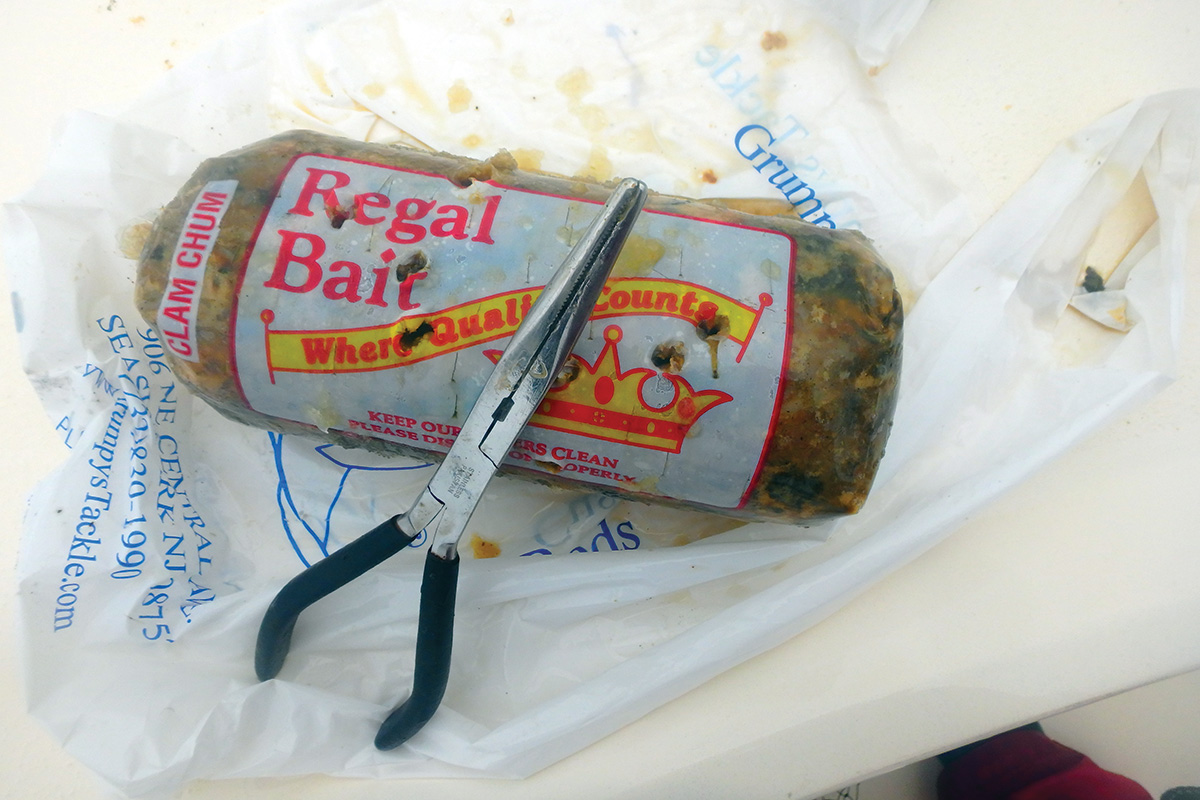
Tides Do Matter
Any time you head out to pluck a few flounder, understand that the fishing is extremely tide dependent. For that matter, wind can play a big factor in your success as well. The ideal situation is to set up on a windless day on high tide in the morning or evening hours. For example, let’s say at 10 a.m. is high tide. You want to be on anchor at 8 a.m. to catch those last two hours up until slack, then fish the next two to three hours after the slack.
Get a well-established clam or mussel chum slick going and that will keep the fish there like the Pied Piper of flatfish. Flounder will bite on most moving water scenarios but when you have slower moving current it’s the best for them to be able to find and pounce upon a bait. Do not discount fishing during low tide hours either, especially at the last of the outgoing or start of the incoming.
Mind where the chum slick is flowing. If it’s a wind against tide scenario, your chum is going to be running out the other side of the boat, or up towards the bow and you won’t be in the zone to catch fish. Adjust your strategy and cast in the direction where the chum is flowing to.
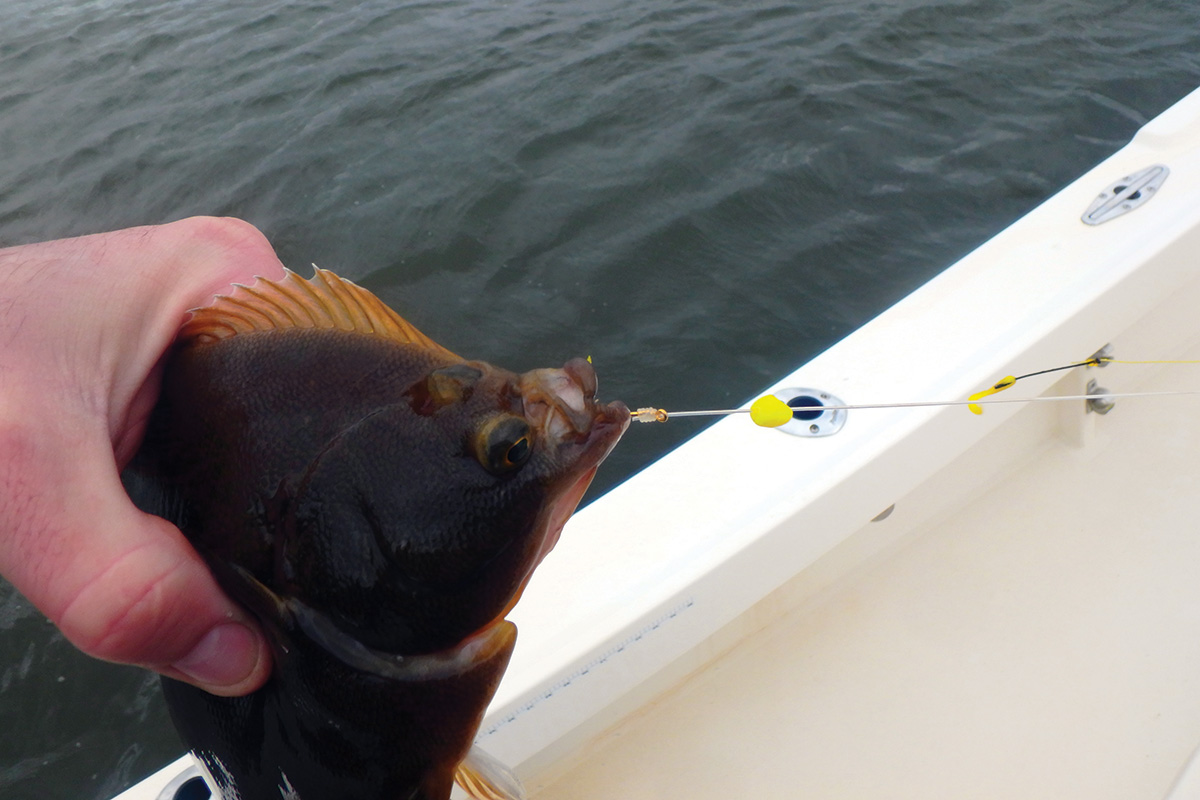
Just Great Bait
Gear up with a 6- to 6-1/2-foot light/medium, moderate action rod rated for 8- to 15-pound such as a Shimano Compre series rod and utilize a small Shimano Stradic 3500 class reel. Standard rigs are comprised of size #6 Chestertown or size #8 baitholder hooks, fixed with a yellow bead above the shank or a small 3/4-inch yellow rubber grub on the hook, lanced on before the bait, and 1- to 2-ounce coin or bank sinkers to hold bottom. A variety of early season baits will work to get a strike such as bloodworms, sandworms, mussels and fresh bits of clam tongue.
Flounder can be fickle biters, and may need some cajoling to get them active. The key to getting flounder to feed is to give them enough scent and chum-driven nibble bits in the water to change their mindset from being sleepily dormant to feeding hard. Once you get them reprogrammed to bite and chew rather than nap and burrow, you can dial them in on drop after drop. If you are finding that the fish are not biting, but just sitting on baits, raise and lower the sinker an inch or two off the bottom and tap-bounce it off the mud bottom. Many times the waving action of the baits will convince an otherwise dormant flounder to hit.
In 2018, we have a season that extends from March 1 to December 31, which allows some of the party boats to get in on the action later into the spring and summer when those winter flatfish have moved offshore into deeper waters. With a 12-inch minimum size and a two fish limit, if last year was any indication, we should be primed for another stellar spring of flounda poundin’ that should lead to far more catchin’ than you’re allowed to keep, but those couple of keepers just don’t get any tastier.
To better plan out your target areas in the Jersey backwaters, check out Captain Segulls Charts at www.captainsegullcharts.com, specifically chart MBB358, RSH363 and LBM357 as they go into better detail about some of those perennial winter flounder hotspots.
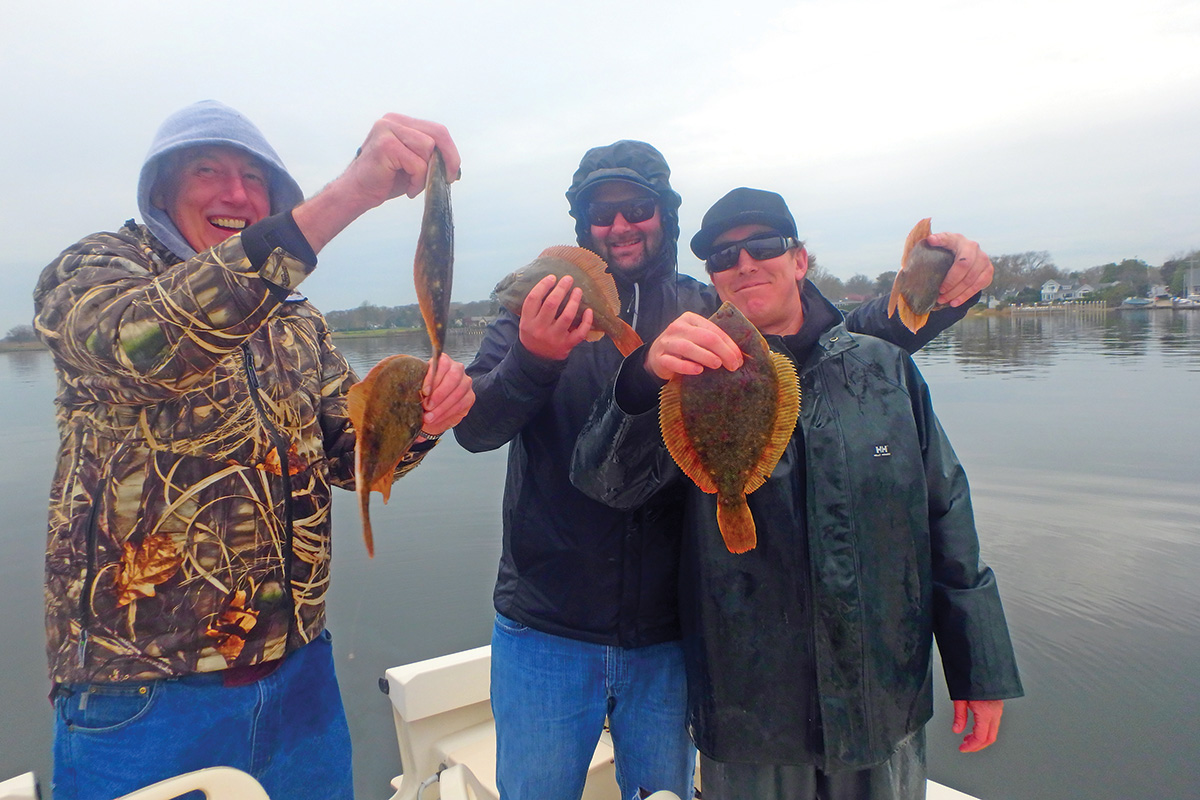
| EYES & TEETH – WINTER VS. SUMMER |
|---|
| Winter flounder can be differentiated from their summer flounder cousins by their small, almost non-existent (comparatively speaking) teeth. The winter flounder’s eyes are nearly always positioned on the right side of their bodies giving them right-eyed or dextral definition in the flatfish family. Summer flounder or fluke, on the other hand, have their eyes on the left side of their bodies and possess large teeth. |

